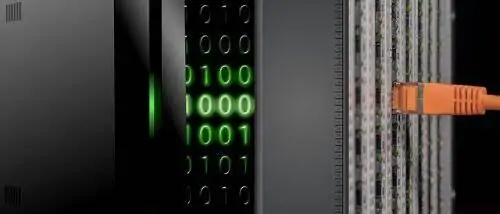Smart data refers to the detailed and structured result of an analysis of unstructured data masses (big data). Every piece of smart data information is an explicit fact. It is also referred to as digital findings, which also allow links to other fine-grained information. In intralogistics, for example, smart data information is presented in a comprehensible and usually graphical form by the control center.
While big data refers to the collection of large amounts of data, smart data focuses on the previously neglected challenge of generating efficient and usable data from huge amounts of data. To do this, data specialists typically use powerful computers (including supercomputers) and algorithms, which are constantly fed new, precisely formulated questions. The aim of smart data is to decouple big data from its “big” size by placing the relevant data in an analytical context that serves the economy and the environment.
It is only through intelligent linking that big data becomes smart data. The use of semantic technologies is a prerequisite for this. The fact is that 80 percent of the data generated worldwide is still unstructured on storage media, and 95 percent of this cannot be evaluated automatically.
Stefan Jähnichen, FZI Research Center for Information Technology and Head of Smart Data Accompanying Research / Digital Technologies “From Big Data to Smart Data – Challenges for the Economy”
Similar to big data, smart data is realized using the three criteria of the so-called “3-V definition” (1):
- Volume – processing of very large amounts of data
- Velocity (speed) – the data is evaluated within tight time frames
- Variety (diversity) – different types of data are evaluated, some of which is unstructured
A fourth important criterion is called ‘veracity’ and refers to the accuracy of the information. This process is essential at the latest when information is evaluated and analyzed.
Smart data: challenges and outlook
The global volume of data will grow forty to fifty times in a few years. This corresponds to a data volume of approximately 40 zettabytes. That is equivalent to forty trillion gigabytes or 4.4 trillion HD movies, each two hours long. But even the estimated amount of all words ever spoken by humans would correspond to 42 zettabytes if digitized. Extracting useful information from this pool of expertise poses an enormous challenge for industry. This is also because information from more and more areas of life is converging and becoming available in digital form.
In the future, countless applications such as navigation or industrial routing, warehouse planning, and process-related predictions (see examples) will be shaped by massive amounts of linked, precise, and thus cumulative data. Unlike today, they will no longer be used on a project-specific basis, but rather across projects. The Internet of Things, which enables automated and generally autonomous communication between manufacturing machines, products, and all other objects involved (tools, spare parts, and individual processes such as replenishment) along the value chain, will create new requirements and opportunities for industry through smart data.
Examples of smart data in industry
In intralogistics, large amounts of data are generally not required. The host, warehouse management system, material flow controller, and the entire materials handling technology (including programmable logic controllers) only need the information that is actually required for the respective process. Looking at logistics in general and from the perspective of a drone, the analysis of smart data comes to the fore, particularly in areas such as simulation, decision support, and predictive analytics. In addition, the use of smart information is already standard in vehicle fleets. Trucks in special logistics and driverless transport vehicles, as well as classic forklifts, are already being remotely maintained using smart data: downtimes, targeted utilization and theft protection are just a few of the features that have been implemented.
But large amounts of processed data can also be used in production today. For example, data is used immediately for condition monitoring, i.e., checking facilities for maintenance optimization and identifying optimization needs (predictive maintenance). In practice, facilities can, for example, regulate their energy consumption independently and in an environmentally friendly manner during production, ramping up or down as needed. Today, wear parts are able to report their quality status or degree of wear to maintenance personnel, who can then initiate replacement and exchange processes as needed. initiate replacement and exchange processes as required.
Smart data in the consumer sector
In the consumer sector, the smart data segment has already reached the end consumer. Map services such as Google Maps, in conjunction with Google Now and Google Search, demonstrate what is possible with partially personalized information in real time: train connections, location linking, traffic reports, location-based weather forecasts – all available on the go and at any time at the touch of a button or via voice command. Countless sensors and interfaces in smartphones and the associated operating systems (Android, iOS, BlackBerry (QNX system)) have recently ensured that the smart home and smart car sectors have also attracted the attention of industry.
(1) Big data, smart data: the most important keywords explained
Further information on smart data and automation in industry can be found in the article: the ant algorithm.
Image source: Pixabay
